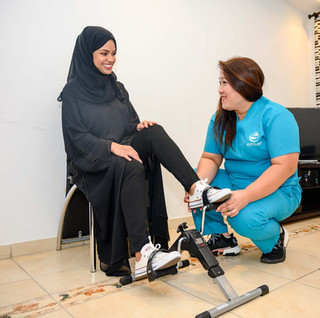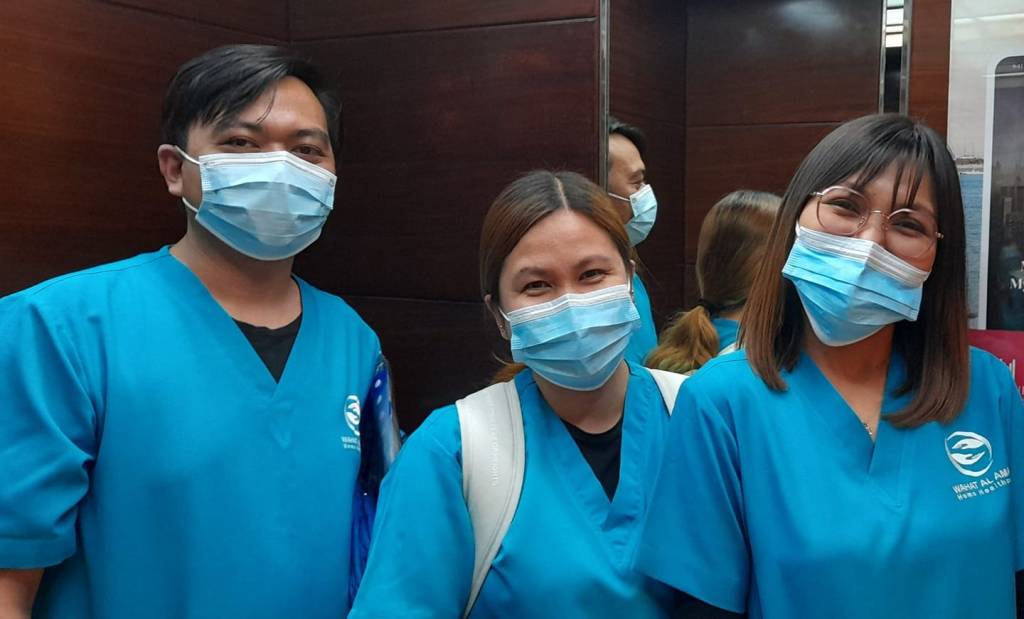Lymphedema is a disease in which the lymphatic fluid builds up in the body from the lymph nodes getting blocked up. It is a chronic progressive condition caused due to insufficient drainage of lymph fluid.
The excess fluid can collect anywhere in the body where lymph node blockage has occurred, such as the face, neck, arms, chest wall, or legs. To keep the nodes working properly, they need to be drained.
Can Physiotherapy at Home Treat this Issue?
Specialists consider physiotherapy as one of the best treatment alternatives in this case. This is because exercise-based therapy helps in multiple ways, such as swelling reduction and a decrease in other side effects arising from this condition. In this post, we will discuss some ways to raise the quality of life through physiotherapy at home services as recommended by well-trained professionals in this field.

Before that, let us look at the two different classifications of Lymphedema –
● The first category is known as Genetic or Primary lymphedema. This is an inherited condition that involves a malformed lymphatic system due to genetic mutation. The genetic disposition leads to aplasia or hypo/hyperplasia of the lymphatic vessels.
● Secondary lymphedema, also called Acquired lymphedema, takes place from other complications, such as a tumor, infection, infestation, cancer, injury, radiation, or surgical interventions. For instance, Filariasis is the direct infestation of lymph nodes by parasites, or blockages caused somewhere in the lymphatic system, from damage caused to a healthy lymphatic system.
How Physiotherapy at Home Helps in its Management
Although lymphedema is progressive, qualified physiotherapists can assist lymphedema patients in regaining function and mobility. Just as there are certain specific steps to provide different treatments, such as peritoneal dialysis at home, here are the most important factors of the treatment plan during physiotherapy at home:
Elevation: Physiotherapists work to restore limb size by elevating it and using air-compressed bladders.
PC (Pneumatic Compression) or PT (Pressure Therapy): This method involves compressed air pumps that help by increasing pressure in the limb with the problem.
DLT (Decongestion Lymphedema Therapy): Many professionals make use of this technique in cases with moderate to severe lymphedema. In it, two steps are involved:
● The first step improves lymph movement to disperse fibro sclerotic tissue.
● In the second step, the therapist conducts manual lymphatic drainage and massages the area gently. After this, they use a compression bandage on the area.
MLD (Manual Lymph Drainage): The therapist performs a light lymph massage aimed at improving lymph flow. Sometimes, they teach the patient to do so on their own as it is quite simple and effective. From proximal to distal, it increases lymph flow from the impacted limb.
Use of Compression Garments and Pumps: Compression promotes drainage and helps reduce the swelling to a great extent. Therapists also educate patients and caregivers about self-bandaging and compression garments for the patient. Once lymphatic drainage is complete, patients usually wear low stretch compression garments.

Gentle massage: Light massage is combined with useful, gentle exercises that prove extremely helpful in decreasing swelling in the impacted part of the body.
Simple Exercises: Specialists who provide services such as physiotherapy and peritoneal dialysis at home recommend low-intensity exercise. This improves the amount of lymph drainage and the quantity of protein muscle contraction absorbs.
Exercise plays an important role in boosting cardiovascular health while reducing the amount of swelling as well. The physiotherapist periodically involves exercises that raise or retain the span of movement and strength of the affected area, improve lymphatic drainage, and raise cardiovascular fitness.
Strength Boosting exercises: This kind of exercise involves elastic bands that differ in the amount of resistance they provide. Experts advise these according to the stage and severity of the disease of the patient, such as walking for extreme cases, and cycling and running for those who are well enough to handle it.
Promoting Skin hygiene: Nurses can help the patient maintain skincare and proper hygiene by teaching them how to clean the skin of the affected regions on a daily basis or do it for them if they are unable. They also apply lotion to maintain moisture in the area. Fastidious skincare cream keeps secondary skin infections away.

Leave a comment